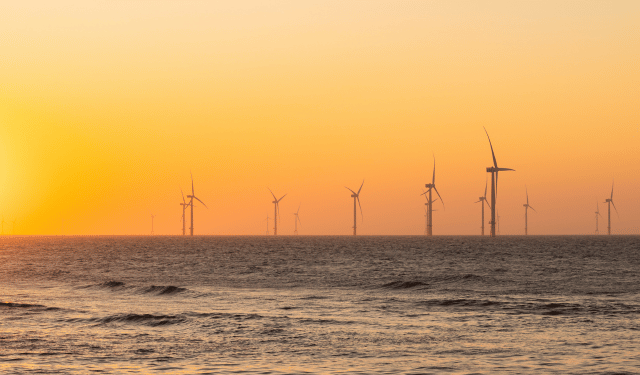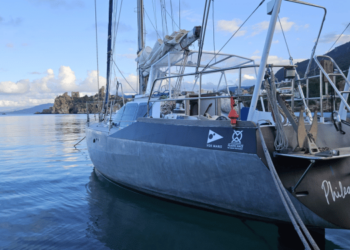Environmental benefits of offshore wind energy – Offshore wind energy represents one of the most promising technologies not only for clean energy production, but also for its significant environmental benefits. At a time when the fight against climate change has become a global priority, offshore wind stands out as one of the most effective solutions to reduce greenhouse gas emissions and minimise the environmental impact of energy supply. In Sicily, thanks to its geographical and climatic characteristics, offshore wind could play a crucial role in contributing to the island’s sustainable energy transition.
Reducing CO₂ and greenhouse gas emissions
One of the main environmental benefits of offshore wind is the significant reduction in greenhouse gas emissions. Every megawatt of energy produced by offshore wind turbines avoids the use of fossil fuels, which are among the main sources of CO₂ emissions. Carbon dioxide emissions from power generation are one of the main causes of global warming and climate change.
Offshore wind turbines offer constant, clean energy production that generates no direct emissions. Unlike gas or coal-fired thermal power plants, which release large quantities of CO₂ and other pollutants into the atmosphere, offshore wind energy uses the wind, a natural and inexhaustible resource, to generate power. According to the International Energy Agency (IEA), each gigawatt-hour (GWh) of energy produced by offshore wind power can avoid the emission of around 500 tonnes of CO₂, depending on the fossil source replaced.
In the Sicilian context, where energy production from fossil sources is still prevalent, the adoption of offshore wind power could contribute substantially to achieving the emission reduction targets set by the National Energy Strategy and international climate agreements.
Limited impact on the marine ecosystem
Another key issue related to offshore wind energy is its impact on the marine ecosystem. Although the construction and installation of offshore wind farms can have effects on the marine environment, recent technological advances have made it possible to minimise these impacts. Scientific studies have shown that, compared to other forms of exploitation of the sea, such as intensive fishing or oil and gas extraction, offshore wind is much less invasive.
Modern installation techniques, such as the use of floating foundations and low-impact anchoring methods, significantly reduce disturbance to the seabed. In addition, turbines are generally installed in areas away from the migratory routes of marine species, thus minimising interference with fish and marine mammals. Mitigation measures, such as acoustic and visual monitoring of marine activities during the construction phase, help to limit damage to local fauna.
Interestingly, in some cases, turbine structures can even act as habitats for marine fauna. In fact, the foundations of offshore turbines can act as artificial reefs that encourage the development of local marine ecosystems, with corals and other benthic species finding refuge in the underwater structures.
Contribution to reducing air and noise pollution
In addition to reducing CO₂ emissions, offshore wind makes a significant contribution to reducing air pollution. Energy production from fossil fuels not only releases large quantities of greenhouse gases, but also other pollutants such as sulphur oxides (SOx), nitrogen oxides (NOx) and fine particulate matter (PM2.5), which are harmful to human health and the environment. These pollutants are linked to a number of public health problems, including respiratory and cardiovascular diseases.
Wind energy, being a completely emission-free source, contributes to improving air quality, reducing the risk of air pollution-related diseases. In particular, in regions like Sicily, where emissions from traffic and fossil fuel power plants are significant, offshore wind power could play an important role in improving air quality.
In terms of noise pollution, offshore turbines are generally installed far enough from the coast not to be a source of disturbance to coastal communities. Unlike onshore turbines, which can generate perceptible noise in the vicinity, offshore turbines operate far from inhabited areas, minimising the noise impact on people.
Supporting biodiversity and conserving natural habitats
Offshore wind energy can play a positive role in the conservation of natural habitats. As mentioned, turbine foundations can act as artificial barriers that stimulate the development of new marine life. In many cases, areas around offshore wind farms become unofficial protected reserves as human activities such as fishing are restricted to protect the energy infrastructure.
This phenomenon creates ‘exclusion zones’ that encourage fish stocking and the growth of biodiversity. The creation of new marine habitats around turbines could, therefore, help improve the overall health of the local marine ecosystem by providing refuge for endangered or vulnerable species.
Another important benefit for the marine environment is the reduction of the risk of accidents related to the exploitation of fossil resources, such as oil spills, which can cause serious damage to marine ecosystems. Offshore wind energy, by not using resources extracted from the subsurface, eliminates these risks, contributing to the protection of waters and coastlines.
Climate change mitigation
One of the largest and most significant benefits of offshore wind energy is its contribution to climate change mitigation. Being a renewable energy source, offshore wind helps reduce dependence on fossil fuels, which are among the main causes of rising global temperatures.
In Sicily, a region that is particularly vulnerable to the effects of climate change, the development of offshore wind energy could play a decisive role in preventing extreme weather phenomena such as heat waves, prolonged droughts and rising sea levels, which threaten the local ecosystem and economy.
Offshore wind also offers a long-term solution for sustainable energy production, as marine wind resources are inexhaustible and do not depend on price fluctuations or fossil fuel availability. This ensures a secure and clean energy supply over time, helping to build an energy future resilient to climate change.
An opportunity to promote environmental education
The expansion of offshore wind in Sicily represents a unique opportunity to promote environmental education and raise public awareness of the importance of renewable energy. Sicilian schools, universities and research centres could use this opportunity to educate new generations on the environmental benefits of wind energy and how the transition to a more sustainable future can be achieved.
Furthermore, offshore wind could become a tangible example of how Sicily can reconcile economic development with environmental protection, inspiring other regions and nations to follow suit.
In summary, offshore wind energy offers a wide range of environmental benefits from reducing greenhouse gas emissions to preserving marine ecosystems. In Sicily, where natural resources are abundant and the need for a sustainable energy transition is urgent, offshore wind power represents a concrete solution to address the environmental challenges of our time.
Its ability to produce clean energy, reduce pollution and mitigate the effects of climate change make it a crucial technology for the region’s future. With the right political, institutional and social support, offshore wind energy could transform Sicily into a leader in the renewable energy sector, helping to protect the environment for future generations.
Source: Offshore Wind Outlook 2019 – IEA
World Economic Forum – Offshore Wind Energy (World Economic Forum)
Through the regional call for proposals ‘Sicilia che Piace’, promoted by the Department of Productive Activities of the Sicilian Region, In Rete SRL has developed the ‘Eolico Offshore Sicilia’ project, an articulated and innovative initiative that explores renewable energy, with a focus on offshore wind energy in Sicily. This multidimensional project is structured to inform and raise awareness on the benefits of sustainable energy, through a multimedia approach integrating articles, documentaries, and online platforms.
Environmental benefits of offshore wind energy









